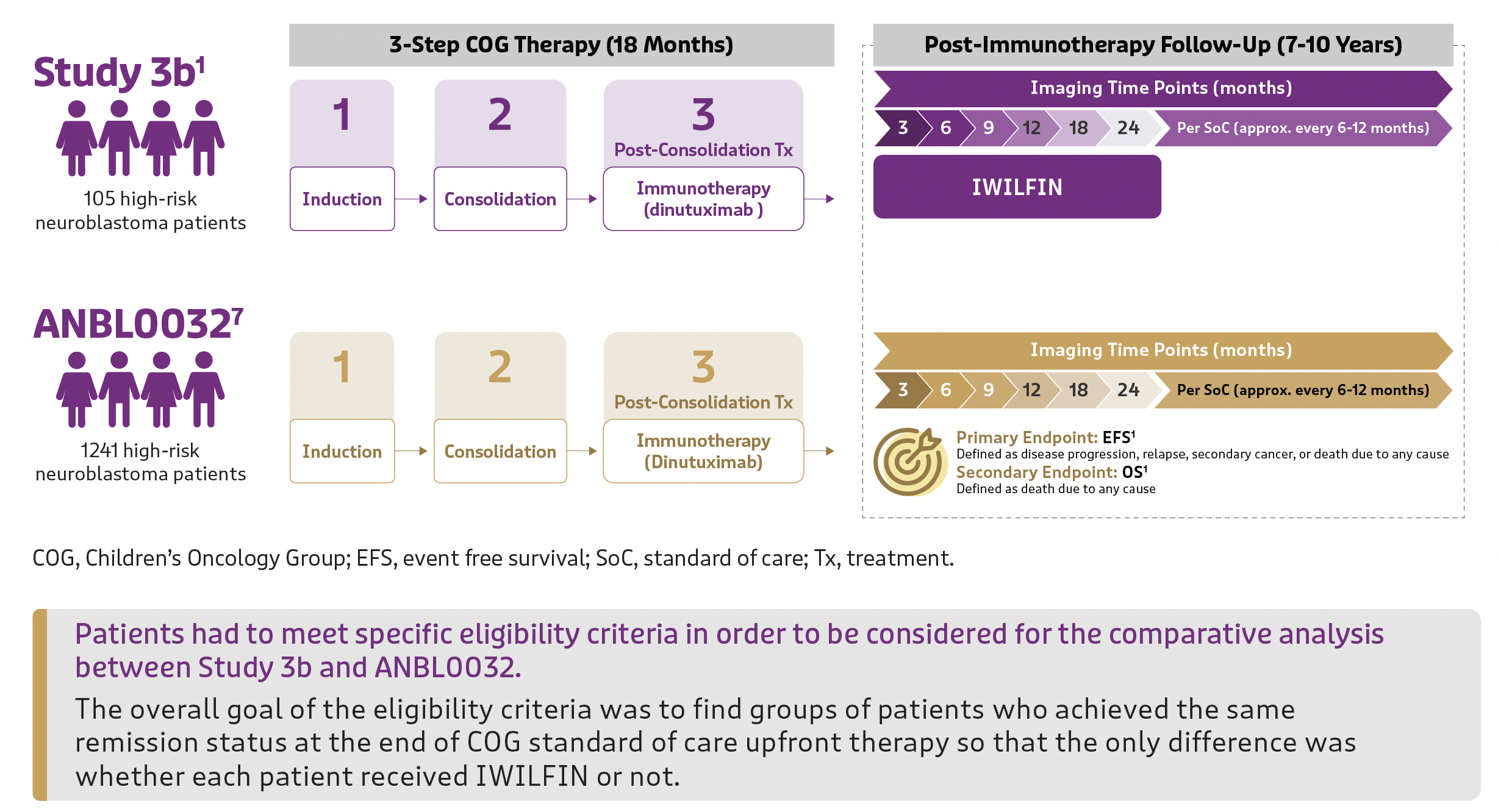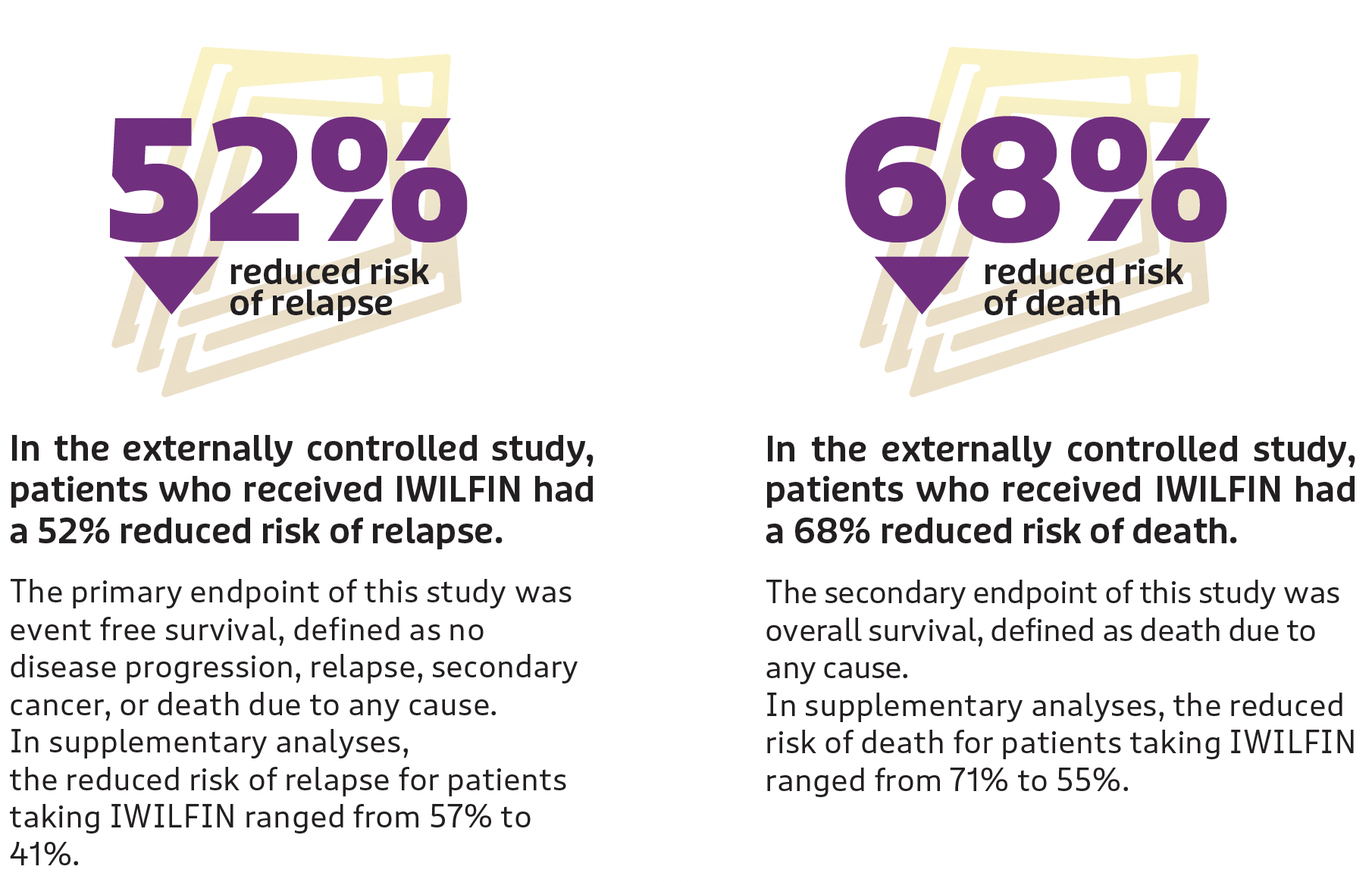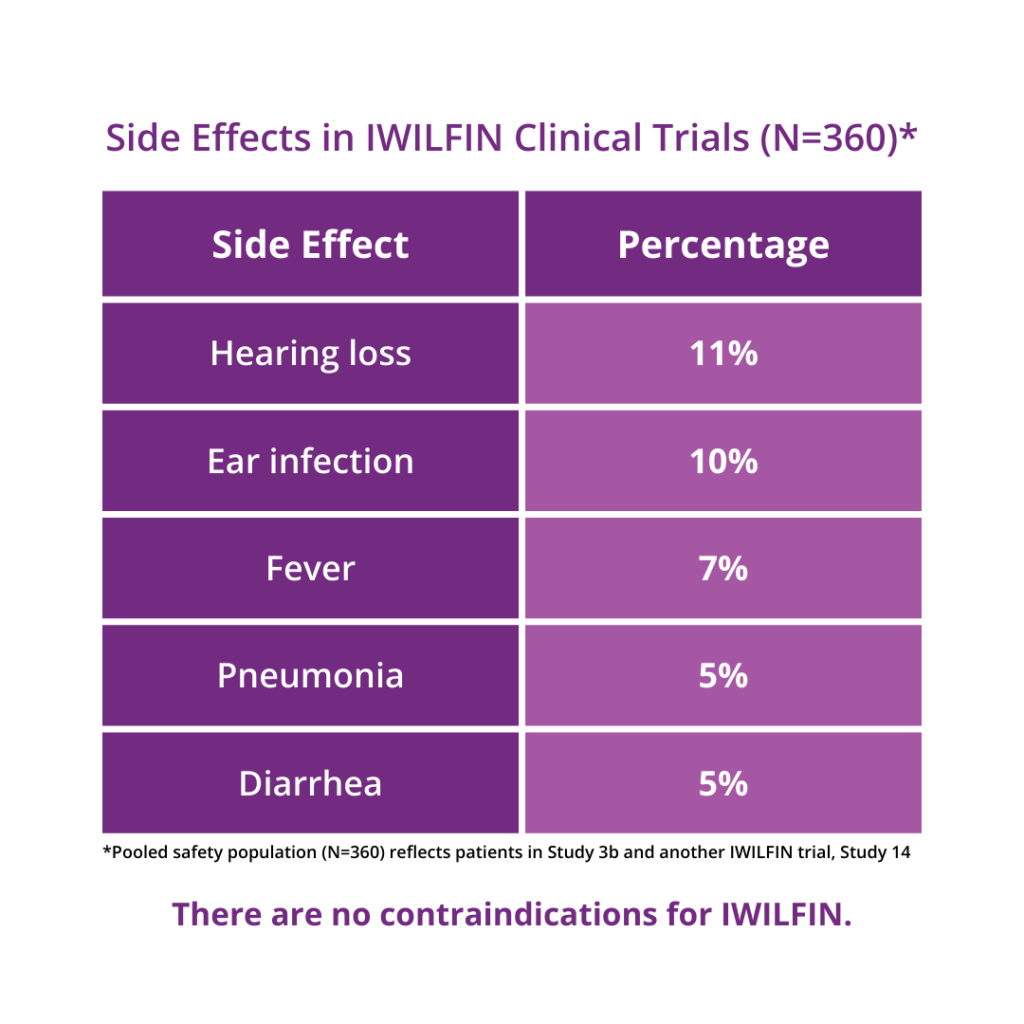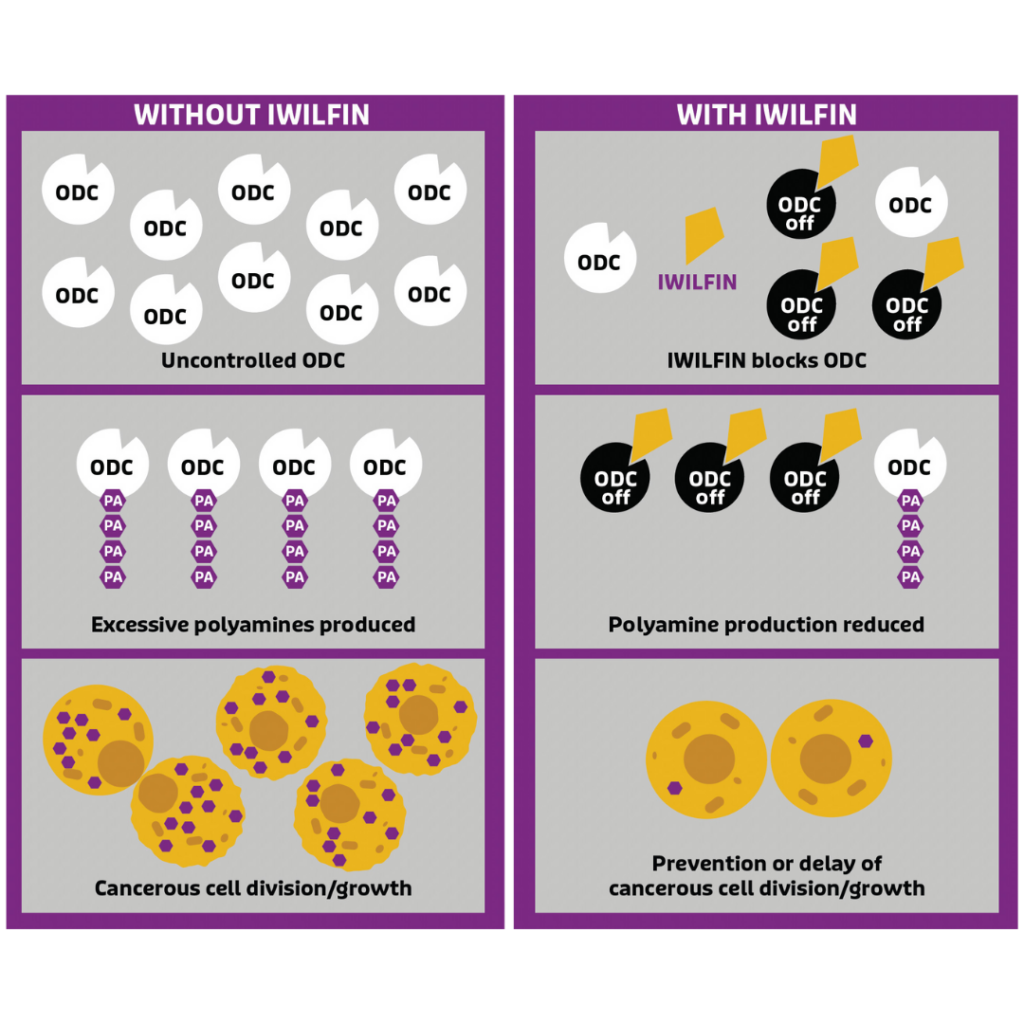IWILFIN and Relapse Reduction
IWILFIN was assessed in Study 3b, a clinical trial examining its safety and efficacy in 105 pediatric patients with high-risk neuroblastoma. All patients received IWILFIN twice daily for up to 2 years after achieving remission from upfront therapy.
To better interpret the outcomes of Study 3b, its results were compared to an external control database of similar high-risk neuroblastoma patients from another trial—Study ANBL0032, which studied pediatric patients who also achieved remission after upfront treatment but who did not go on to receive IWILFIN.


IWILFIN Side Effects
In clinical studies, IWILFIN was generally well tolerated and side effects were manageable.
- Hearing loss is common during treatment with IWILFIN and can be serious. During clinical trials, hearing loss was sometimes reversible by adjusting the IWILFIN dosage
- IWILFIN could cause low blood counts and failure of bone marrow to make enough platelets, red blood cells, or white blood cells. Blood count monitoring will occur before starting and during treatment with IWILFIN
- IWILFIN could cause liver problems. Blood tests to monitor liver function will occur before starting and during treatment with IWILFIN

How IWILFIN Works in High-Risk Neuroblastoma

IWILFIN is a targeted therapy that disrupts the polyamine pathway that plays a role in tumor growth and development.
Also known as DFMO (difluoromethylornithine), IWILFIN works by blocking an enzyme called ornithine decarboxylase (ODC). ODC is responsible for producing polyamines (PAs), which are important to tumor formation and growth.
Learn more about IWILFIN by watching the video below.
IWILFIN Caregiver MOA Video from US WorldMeds on Vimeo.

Explore what support is available to you and your child when taking IWILFIN.


